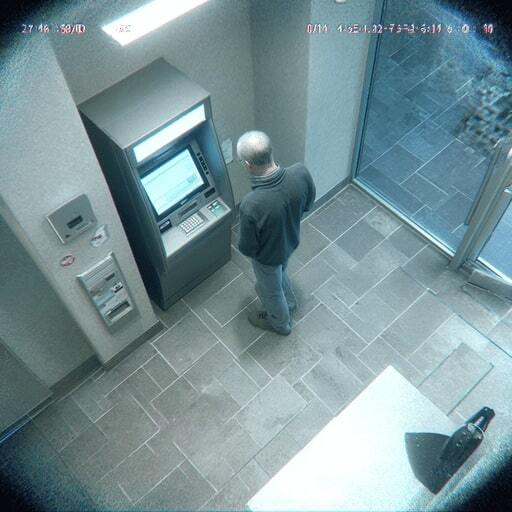Everyone's watching the wrong thing.
Nvidia dominates headlines. AMD fights for market share. Everyone's obsessed with who manufactures the next generation of GPUs.
But there's a constraint forming that silicon can't solve: power.
A single ChatGPT query needs 2.9 watt-hours of electricity. Compare that to 0.3 watt-hours for a standard Google search. That's ten times the draw for each interaction.
And as AI scales across enterprise applications, the math becomes impossible to ignore. Data centers will consume 8% of total US electricity by 2030, up from just 3% in 2022.
The thesis is simple. The next bull run won't be in AI's brain. It'll be in what feeds it. The grid is becoming the supply chain choke point, and most investors aren't positioned for it.

Which investment area do you believe has more upside from AI right now?
Big Tech Is Already Moving
Follow the capital.
Microsoft $MSFT just signed a 20-year agreement with Constellation Energy $CEG to restart Three Mile Island's Unit 1. The reactor was shut down in 2019 because wholesale electricity markets couldn't justify keeping it running. Now Microsoft is paying a premium to bring it back online by 2028.
Amazon isn't far behind. AWS secured a deal tied to nuclear facilities in Pennsylvania, effectively buying data center campuses with dedicated nuclear power. Google is backing SMR development with direct investment dollars.
These aren't sustainability gestures. They're survival moves.
Tech companies need firm, carbon-free power that's available around the clock. Solar panels and wind turbines can't guarantee that. So they're acting like utility developers, locking down baseload generation before competitors can.
The message is clear: reliable electricity is now mission-critical infrastructure. And companies will pay above-market rates to secure it.
The Intermittency Problem

Renewables are expanding fast. But they have a fundamental problem for AI workloads: intermittency.
Training large language models takes weeks of continuous computation. You can't pause a training run when wind speeds drop or clouds block sunlight.
Data centers need uninterrupted power flow, 24 hours a day, 365 days a year.
Nuclear plants deliver exactly that. They operate at 92-93% capacity factors, making them the most reliable electricity source available. No other carbon-free technology comes close to that consistency.
Political momentum is shifting to recognize this reality.
Over twenty countries committed at COP28 to triple nuclear generation capacity by 2050.
The European Union is incorporating nuclear energy into its green taxonomy. After decades of resistance, policymakers are acknowledging that hitting decarbonization targets while meeting rising demand requires nuclear baseload.
Do you agree that nuclear energy is essential for powering the future of AI?

UN-Limited Limit Orders in DeFi
CoW Swap limit orders offer:
Unlimited order management: Limit orders on CoW Swap are completely FREE to place or cancel. Yes, really!
Unlimited order placement: Use one crypto balance to place multiple orders at once, even if you don’t have the full amount yet. That’s useful!
Unlimited order surplus: All upside captured after a price is hit goes to you and not to order takers. As it should be!
Plus everything else you know and love about CoW Swap, like gasless trading and MEV protection.

The Investment Instruments

Capturing this infrastructure build-out means targeting specific exposure across the nuclear value chain.
$URA (Global X Uranium ETF) tracks uranium mining and nuclear equipment companies. Demand for reactor fuel is projected to nearly double from 65,650 metric tonnes in 2023 to 130,000 metric tonnes by 2040. Supply hasn't kept pace.
That imbalance creates upside potential, but also significant volatility. The ETF's P/E of 58.81 reflects aggressive growth expectations priced in.
$NLR (VanEck Uranium+Nuclear Energy ETF) provides direct exposure to utilities and firms building nuclear capacity. It sits closer to actual infrastructure deployment than pure commodity plays, offering a middle ground between volatility and stability.
$XLU (Utilities Select Sector SPDR) is the conservative entry point. Regulated utilities were dead money for twenty years. Now they're facing the first sustained demand acceleration since the early 2000s.
US utilities will deploy roughly $50 billion in new generation capacity just to support data center growth. As rate bases expand, equity holders benefit directly.
Compare these valuations to the tech sector. Nvidia trades at multiples that assume flawless execution for years. Meanwhile, power infrastructure sits at reasonable valuations while facing genuine, quantifiable demand growth.
Individual names like $CEG (Constellation Energy) and $VST (Vistra Corp) offer concentrated exposure to nuclear generation assets. These companies own the physical plants that tech firms are desperate to contract with.
The Reality Check

Regulatory approval timelines are measured in years.
The Nuclear Regulatory Commission process is notoriously slow.
Three Mile Island won't restart until 2028, four years after Microsoft announced the deal. Any new construction faces even longer lead times.
SMRs remain largely unproven at commercial scale. Development is progressing, but large-scale deployment is still theoretical. Execution risk is real.
Construction pace matters. China brought 40 nuclear plants online over the last decade and is building 30 more. The US has commissioned three. Closing that gap requires overcoming decades of regulatory inertia and public opposition.
NIMBY resistance hasn't disappeared. Siting new nuclear facilities faces persistent local pushback. Projects can stall or get canceled entirely.
And stock prices may already be discounting capacity that won't come online for five years. Near-term volatility is likely as the market reprices based on actual construction timelines rather than announced plans.
The Infrastructure Phase Is Starting
The hardware phase of AI is maturing. GPU supply constraints are easing. Valuations reflect optimistic assumptions about future growth.
But the infrastructure to power AI at scale is still being built. The capital deployment cycle for energy infrastructure is just beginning. And it will take years to play out.
For investors holding concentrated tech positions, rotating a portion into energy infrastructure creates a natural hedge.
You maintain exposure to AI growth while reducing sensitivity to tech sector volatility.
The opportunity is straightforward. AI demand isn't slowing down.
The power to run it has to come from somewhere. Right now, the market is underpricing the companies that will provide it.
Target tickers: $URA ( ▼ 4.83% ) , $XLU ( ▼ 1.38% ) , $NLR ( ▼ 4.94% ) , $CEG ( ▼ 5.16% ) , $VST ( ▼ 3.76% )




